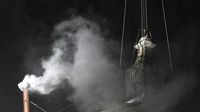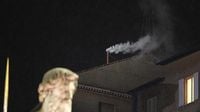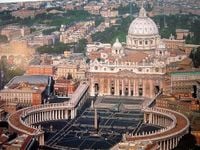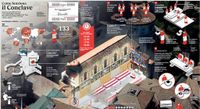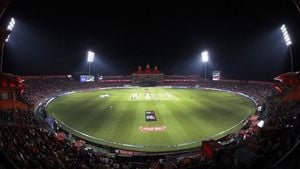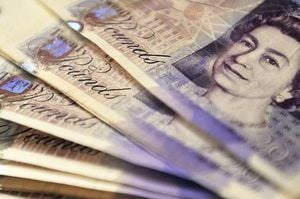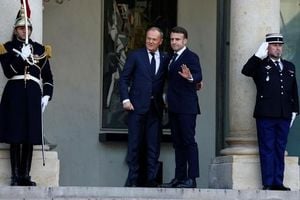As the Vatican prepares for a historic conclave, anticipation builds for the election of the 267th Pope, following the legacy of Pope Francis. The conclave officially begins today, May 7, 2025, with 133 cardinal electors gathering in the Sistine Chapel, where they will engage in a series of votes to determine the next leader of the Catholic Church.
The day starts with a solemn mass, Pro Eligendo Romano Pontifice, at 10:00 AM in St. Peter's Basilica, presided over by Cardinal Giovanni Battista Re. This mass sets the tone for the proceedings to follow, as the cardinals prepare for the significant responsibility ahead of them. At 4:30 PM, the cardinals will enter the Sistine Chapel, marking the official start of the conclave.
According to Matteo Bruni, the director of the Vatican press office, the first smoke signal, indicating the outcome of the voting, is expected shortly after 7:00 PM. If the new Pope is elected during one of the earlier votes, the smoke will appear sooner, providing immediate feedback to the faithful gathered outside.
Throughout the conclave, voting will take place twice each morning and twice each afternoon, with potential smoke signals at various times. If white smoke is seen around 10:30 AM or 5:30 PM, it will confirm the election of a new Pope, while black smoke at noon or 7:00 PM indicates that no decision has been reached.
Bookmakers are placing their bets on the potential candidates, or "papabili," with Cardinal Pietro Parolin emerging as a frontrunner. Parolin, a former Secretary of State, is believed to have garnered significant support, potentially around 50 votes. Other notable candidates include Cardinal Luis Antonio Tagle from the Philippines and Cardinal Matteo Maria Zuppi, the Archbishop of Bologna, who is also gaining traction among the electors.
As the cardinals prepare for the voting, they are acutely aware of the challenges ahead. Many are first-time electors, or "cardinali novellini," and will rely on their intuition and existing networks within the Church to navigate the complexities of the conclave. The atmosphere is charged with a mix of hope and apprehension, as they strive to find common ground amidst differing opinions and expectations.
The conclave is expected to be a brief one, with Cardinal Louis Raphael I Sako predicting it will last only two to three days. This optimism contrasts with the historical precedent of longer conclaves, the longest of which extended over two years. Current speculation suggests that the first smoke signal may not be white, with odds at 9 to 1 against it occurring today, but the likelihood of a white smoke signal on May 8 is rated at 2.10, and May 9 at 2.75.
In the lead-up to the conclave, the cardinals have addressed pressing issues facing the Church, including the need for a leader who can unite the faithful and address the ongoing crises in Ukraine and the Middle East. A joint declaration from the cardinals expressed regret over the lack of progress toward peace and called for a permanent ceasefire.
Once a new Pope is elected, he will retreat to the "Stanza delle Lacrime" (Room of Tears) to gather his thoughts before appearing on the balcony of St. Peter's Basilica. This tradition allows the new pontiff a moment of reflection and prayer before he is introduced to the world.
As the conclave unfolds, all eyes will be on the smoke signals emerging from the Sistine Chapel. Each puff of smoke will carry not just the outcome of the votes, but the hopes and prayers of over a billion Catholics worldwide. The significance of this moment cannot be overstated, as the new Pope will be tasked with leading the Church through complex social, political, and spiritual challenges.
With the conclave officially underway, the cardinals will now enter a period of intense deliberation and prayer, seeking divine guidance as they embark on the monumental task of electing the next Pope. The world watches closely, eager to see who will emerge as the new leader of the Catholic Church and what direction he will take in the years to come.
